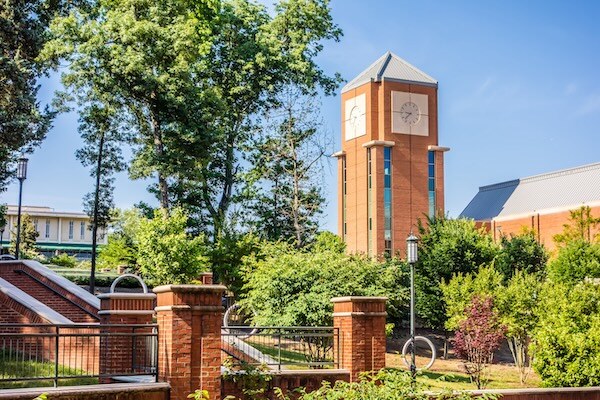Published on
The U.S. Naval Community College: Navigating Innovation in Military Higher Ed

Innovation and military are two words you don’t often hear in the same sentence when it comes to higher education. The rigid traditions and hierarchical structures of the armed forces don’t necessarily lend themselves to the kind of agile, experimental mindset required to push boundaries and challenge the status quo in academia.
But the U.S. Naval Community College (USNCC is working to write a different story. I recently had the privilege of speaking with USNCC president Dr. Randi Cosentino on The EdUp Experience Podcast, and she had a lot to say about the right ways to serve military students.
Charting a New Course
Dr. Cosentino described USNCC’s mission as encompassing “three legs of the stool”:
1) Operational readiness
2) Warfighting advantage
3) Connecting service members to lifelong learning
From the website: “The United States Naval Community College (USNCC) was introduced to support enlisted Sailors and Marines in achieving professional certificates and associate degrees that will enhance operational readiness and improve warfighting capabilities, while putting students on a path to lifelong learning. USNCC has since expanded to support active-duty enlisted Coast Guardsmen and Coast Guard Reservists.”
What’s unique is how USNCC is going about achieving those objectives as a new community college operating within the massive, well-established Department of the Navy. Some important elements of achieving these objectives include:
- Serving a joint population of sailors, Marines and Coast Guard
- Operating consortium-style, partnering with other institutions to develop and deliver concentrations and gen eds, supplemented by a USNCC-developed Naval Studies Core Certificate
- Embedding stackable certificates within associate degree programs
- Aligning closely with naval training and skills to enhance performance inside the fence line
- Building robust transfer pathways to four-year institutions
Successfully launching the USNCC has required skillfully navigating layers of bureaucracy, tradition and inertia that are part and parcel of the higher ed “assimilation culture,” as I call it in my book Commencement: The Beginning of a New Era in Higher Education. USNCC’s team has found creative ways to circumvent traditional roadblocks such as:
- Overcoming the not-invented-here mentality by seeking partners to develop programs vs. trying to do it all in-house
- Focusing intently on access and meeting learners where they are, combating the exclusionary impulse to limit to the so-called right students
- Wielding accreditation as a tool for innovation vs. an excuse to stifle it
- Measuring and getting credit for the skills and training service members already possess
The USNCC is still very much in startup mode, having just completed their initial 550-student pilot and now scaling to enroll over 3500 in seven newly launched associate programs, with their eye on much more growth ahead. They recently achieved the major milestone of being formally established into law by Congress in December 2022.
Lessons for the Field
While unique in many ways, the USNCC’s experience holds valuable insights for any higher ed leaders striving to drive transformative change. Here are a few key takeaways.
- Look to outsiders for fresh a perspective. Dr. Cosentino highlighted the value of tapping partners and new types of expertise beyond the Navy’s traditional structures.
- Design for the realities of your learners. For USNCC that means globally deployed service members who need high-quality asynchronous online programs with multiple on- and off-ramps.
- Build skills translation into the model. Leverage tools like the American Council on Education’s credit recommendation service to give learners credit for skills and experience gained through military training.
- Leverage accreditation to enable innovation. While still early in their accreditation journey, USNCC sees it as an opportunity to build innovative practices like credit for prior learning into their model.
The USNCC has set an ambitious goal to, in Dr. Cosentino’s words, “not only improve access but also success” for their service member students. The data shows how high the stakes are: Only about 12% of sailors have an associate, and fewer than 7% have a bachelor’s degree. But three to five years after earning an initial degree, those numbers rise to 35 to 40% with an associate and 10 to 14% with a bachelor’s, Dr. Cosentino said.
While still very much at the beginning of their journey, the USNCC offers a fascinating case study on driving large-scale innovation in one of higher education’s most complex and entrenched ecosystems. Their story will be one to watch in the years ahead—and perhaps a North Star for others navigating choppy seas of change.



